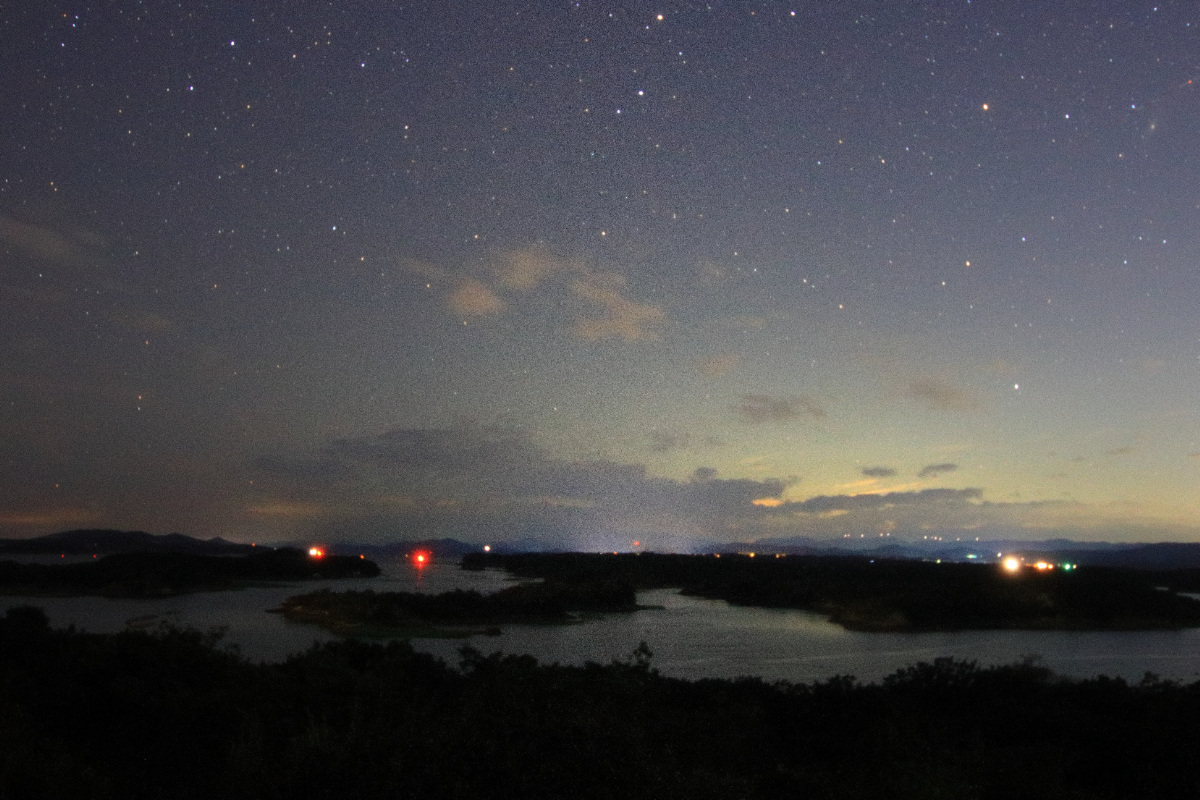Known as a famous sightseeing spot for the setting sun, a view point where you can see Ago Bay from a close distance, where the pearl raft and sea lettuce farms make you feel the "Satoumi" - areas where diverse ecosystems are maintained under human influence
- A view point on the east side of Ago Bay. Kashikojima Island can be seen to the right, with Masakijima Island in front and Sakishima Peninsula (the south area of Shima Peninsula) to the left.
- Ago Bay contains pearlfarms and aosa (sea lettuce) cultivation nets, which can be seen from the fall through spring. You can admire the scenery of satoumi, a marine area where people conserve and use natural resources in a sustainable way.
- It is one of the best known viewpoints in lse-Shima for the sunset over Ago Bay.
- It is located in Tomoyama Park, along with several other viewpoints,including Tomoyama View Point. You can treat yourself to a picnic or do some hiking, although walking shoes are required.
- The surrounding area contains activity bases, sports facilities, hotels, camping sites, and beaches.
The gateway to sightseeing in Ago Bay, the archipelago, where there is a railway station and a pleasure boat platform
- Kashikojima Island is the largest populated island in Ago Bay and is connected to the mainland by two bridges.
- The island is a base for sightseeing; there are large hotels and leisure facilities, in addition to the terminal of Kintetsu Shima Line Kashikojima Station.
- The lse-Shima Summit Memorial Museum "SumMiel" is located on the 2nd floor of Kintetsu Kashikojima Station and celebrates the G7 lse-Shima Summit held in May 2016. The round table and chairs used at the summit are exhibited.
- Kashikojima Port is the departure and arrival point for pleasure cruisers around Ago Bay and boats to Masakijima Island, Wagu, Goza, and Hamajima.
- Pearl culture is popular in the surrounding seas, and there are facilities where you can see nucleus insertion work.
Enjoy the clear sea and a rustic time on the remote island of Ago Bay
- Masakijima Island is an island that once flourished and was called "Jewel island" due to its pearl culture, which continues to thrive today.
- Masakijima Beach has very clear water, which makes it a popular spot for snorkeling. The gentle waves mean it is safe even for beginners.
- There is a small park with a view across Ago Bay and Cape Goza (the head of Sakishima Peninsula) to Kishu (Kii Peninsula).
- The fishing port and pocket park make ideal spots from which to view the amazing sunset over the entrance of Ago Bay.
- The western part of the island features narrow alley settlements, while the center to the east contains quiet forests. You can take a leisurely walk while looking out at the pearl culture scene.
Enjoy a 360-degree panorama of Ago Bay and the Pacific Ocean from the view point on the summit
- Located on a hill at an altitude of 112 meters at the head of the Sakishima Peninsula (the south area of Shima Peninsula).
- The viewpoint at the top has a magnificent 360-degree view overlooking Ago Bay, Shima Peninsula, the Pacific Ocean, and the Kii Mountains.
- The area around the viewpoint comprises open space where you can take a break on a bench or in a gazebo.
- There is a green hiking course; from Goza fishing port to the viewpoint is about 1.5 kilometer and from the viewpoint to Azuri Beach is about 1.2 kilometer.
- Tsumekiri Fudoson Temple is located at the foot of Mt. Konpira on the Goza fishing port side, related to the famous monk Kobo Daishi (also known as Kukai, 774 - 835), the founder of the Shingon Sect (one of the major Japanese Buddhist sects). According to legend, he was impressed by the hospitality of the local people when he visited the area, and then carved the stone figure of the Buddhist guardian deity Fudo Myo-o using only his nails. This stone is enshrined as Tsumekiri Fudoson.









